We may be compensated if you purchase through links on our website. Our Reviews Team is committed to delivering honest, objective, and independent reviews on home products and services.
Wall cubbies are a versatile and stylish wall-mounted storage option. These modular units are perfect for organizing books, displaying decorative items, or storing everyday essentials. In the video above, This Old House host Kevin O’Connor demonstrates how to create these functional and attractive wall cubbies with the help of family.
Plan Your Wall Cubbies
Plan your design carefully before cutting any wood for your wall cubby project. Begin by determining the number of cubbies you want and the size of each cubby, with the standard size being 12-inch cubes. Take into account the wall space available and the types of items you plan to store or display.
Customizing the size of your cubbies allows you to tailor the design to fit your specific needs. However, remember that larger cubbies may require additional support when mounted on the wall to ensure stability and durability.
Apart from the basic structure, you can choose various decorative features. Consider the color schemes, the type of fabric for designer inserts, or even special coatings to keep your wood looking polished. If you often change your decor, the removable back panel feature is a great option.
Wall Cubby Materials and Tools
Before starting your wall cubby project, gather the following materials and tools.
Materials
- 1/2-inch birch veneer plywood
- 1/4-inch lauan plywood
- 1-inch box nails
- 2-inch screws and washers
- 4d finish nails
- Acrylic artist’s paint
- Clear acrylic coating or latex paint
- Fabric (optional)
- Velcro tape
- Wall anchors (if needed)
- Wood glue
- Wood putty
Tools
- 2-inch paintbrush
- Bar clamps
- Drill/driver with a 1/16-inch bit
- Hammer
- Jigsaw or handsaw
- Nailset
- Putty knife
- Random orbit sander
- Safety glasses
- Screwdriver
- Small artist’s paintbrush
- Staple gun
- Straightedge ruler
- Tape measure
Safety Measures During Wall Cubby Assembly
Prioritize safety when doing any woodworking project. Take the following safety measures:
- Always wear safety glasses and, if necessary, a dust mask and hearing protection.
- Make sure your workspace is well-ventilated, especially when sanding or using finishes.
- Regularly check your tools to confirm they’re in good working condition. Dull blades or malfunctioning equipment can be dangerous.
- If children are involved, ensure an adult oversees all tasks involving power tools and sharp objects.
Step-by-Step Guide for Building Wall Cubbies
Follow the steps below to build your custom wall cubbies.
Step 1: Cut the Plywood
To create a 12-inch cube, you’ll need to cut the following pieces:
- Two 12-by-12-inch pieces for the top and bottom
- Two 11-by-12-inch pieces for the sides
- One 12-by-12-inch piece of lauan for the back
- One 11-by-11-inch piece of lauan for the decorative insert
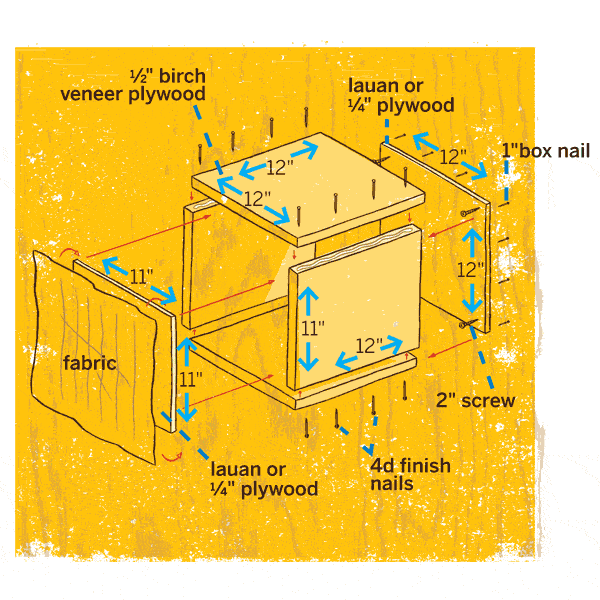
Mark your cuts accurately using a straightedge. Sand the edges once each piece is cut to eliminate rough spots and splinters. Always have a parent or an experienced adult assist with the cutting process.
If you’re not comfortable using power tools, consider having the pieces cut at a home center or lumberyard.
Step 2: Lay Out and Cut the Wall Cubby Parts
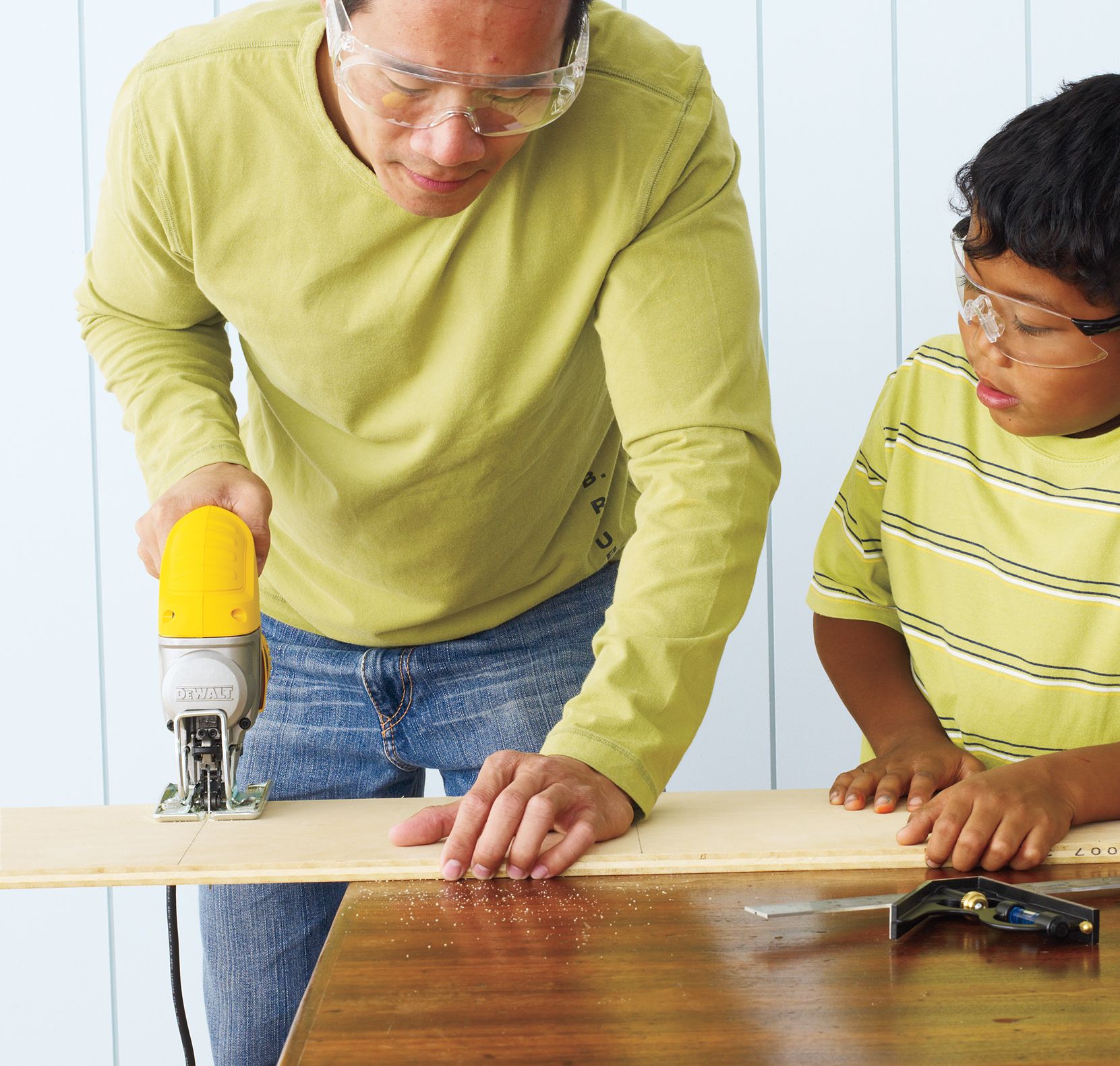
Using a tape measure and straightedge, mark up some birch veneer plywood to make the two 12-by-12-inch top and bottom pieces and the two 11-by-12-inch sides. Also, mark up some lauan to make one piece that’s 12 by 12 inches and one that’s 11 by 11 inches. Clamp the plywood tightly to a worktable. Then, using a jigsaw (a handsaw or circular saw will also work), cut the four sides.
Parents: Here’s a chance to do a stealth math problem with your kids. Ask them why the two sides have to be shorter than the other parts to make a perfect cube.
Step 3: Glue the Boards
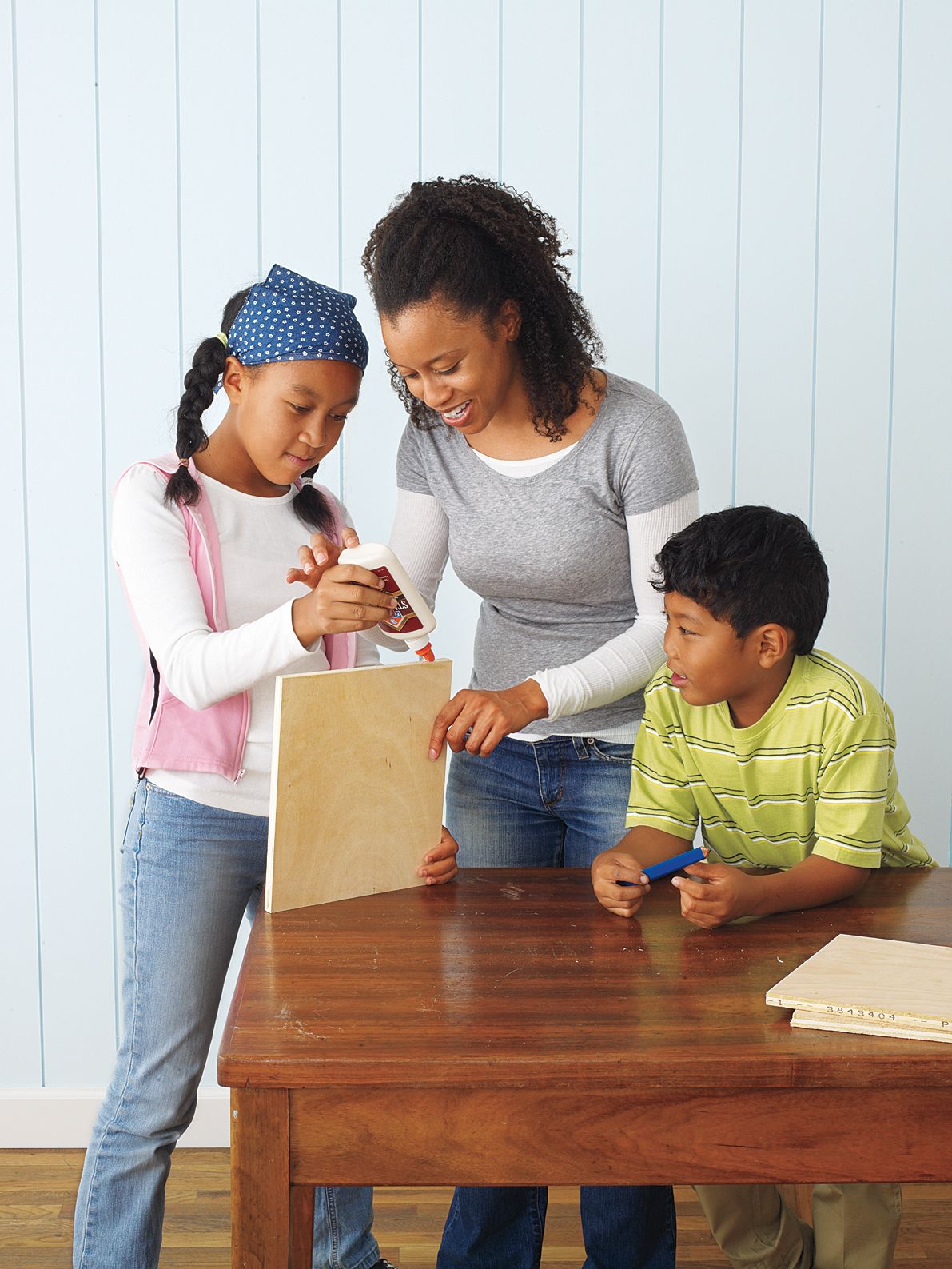
Run a thin bead of wood glue along the 12-inch edges of the 11-by-12-inch boards. Then, make a box by overlapping the ends with the 12-by-12-inch boards. Hold the glued box together with bar clamps.
Step 4: Nail the Cubby Box Together
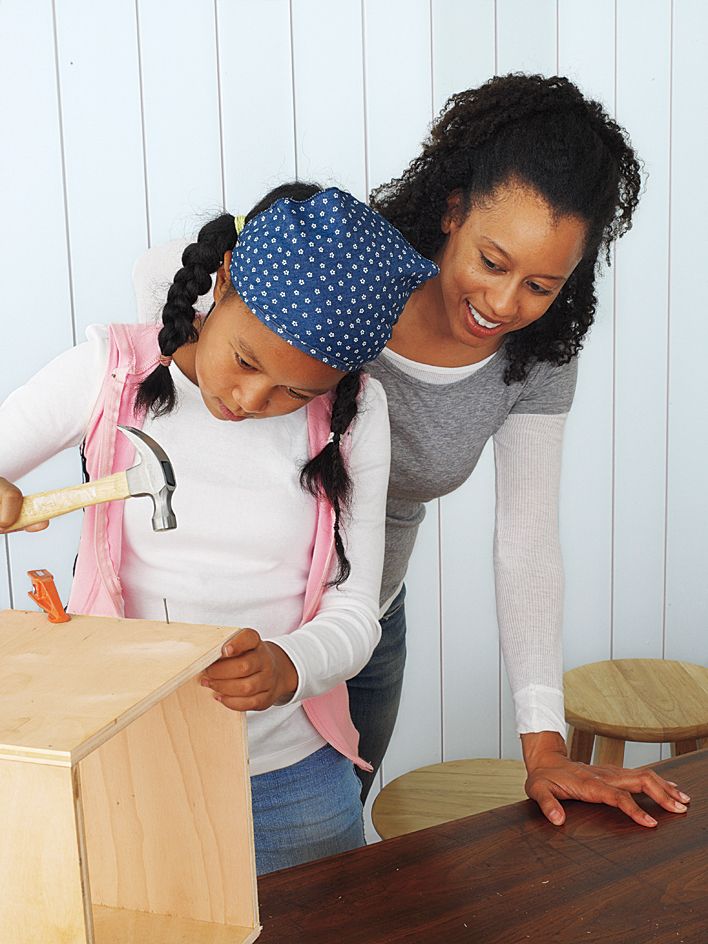
Secure the sides by nailing 4d finish nails every few inches along the edges of the top and bottom. You’ll need about four nails on each side. Remove the clamps.
Kids: Here’s a chance to practice your nailing skills. Hold the hammer toward the end of the handle. Keep your eye on the nailhead while tapping firmly. And don’t worry if you mess up—you can always take the nail out and try again!
Step 5: Attach the Back of the Wall Cubbies
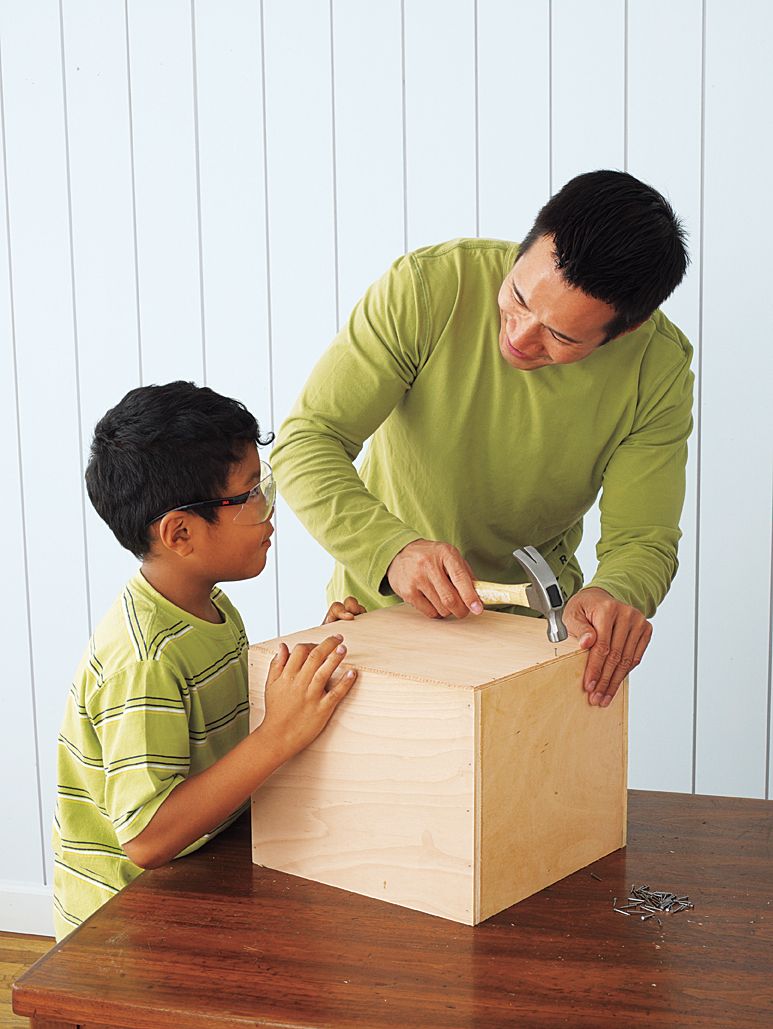
Lay a thin bead of wood glue around the entire back edge of the box. Then lay the 12-by-12-inch piece of lauan over it. Nail it in place using 1-inch box nails around the perimeter.
Step 6: Fill and Sand the Cubby
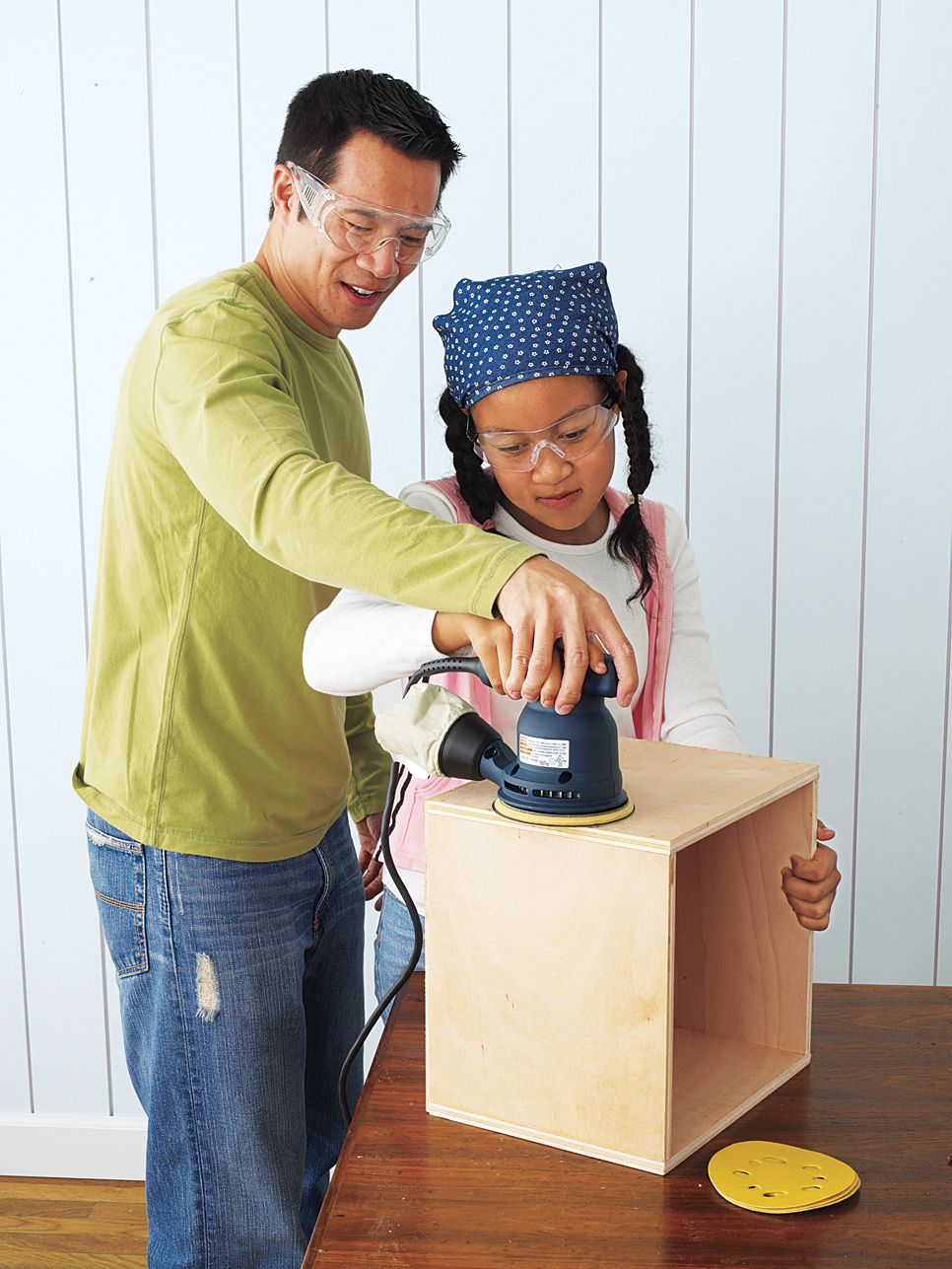
Using a hammer and nailset, sink all the finish nails on the sides just below the surface of the wood. Then, using a putty knife, fill the holes with putty. Let the putty dry, and wait a few minutes for the glue to set as well.
Using a random-orbit sander with 120-grit sandpaper, smooth the plywood sides of the cubby to prepare them for finish. Kids can help with sanding—just make sure a parent watches because the sander moves a lot when it vibrates.
Step 7: Paint the Finish on the Wall Cubbies
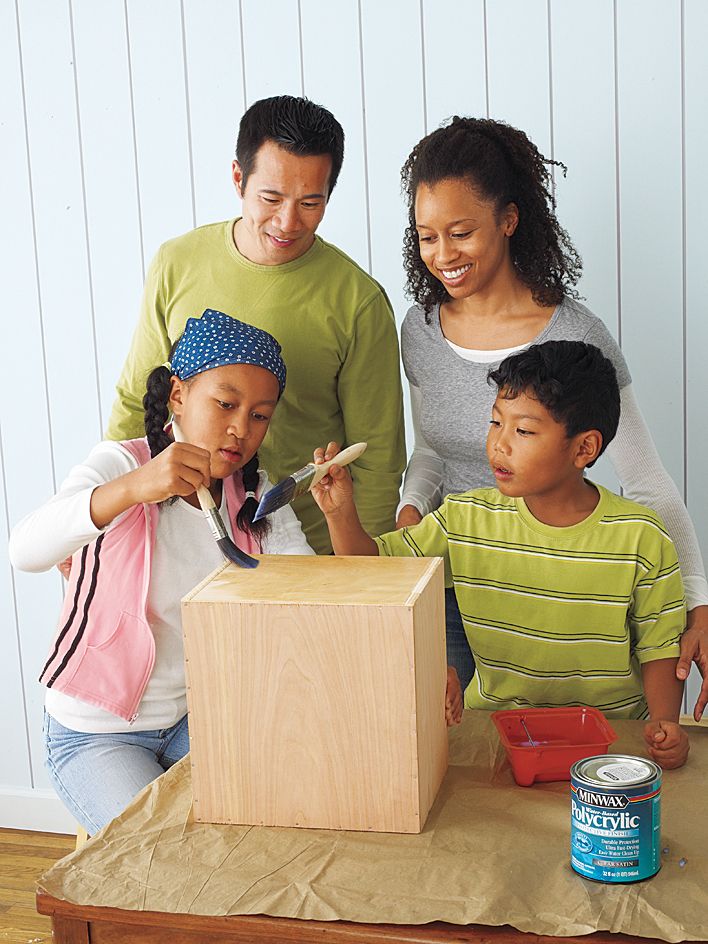
Using a 2-inch brush, coat the top, bottom, and sides of the cubby with a clear acrylic coating (for a wood finish) or latex paint (for a colored finish). Let it dry, sand it lightly, then apply a second coat.
To add a colorful touch, use a small brush and acrylic artist’s paint to match the front edge of the box to the fabric that will decorate the inside panel. Let it dry completely.
Step 8: Secure the Cubbies to the Wall
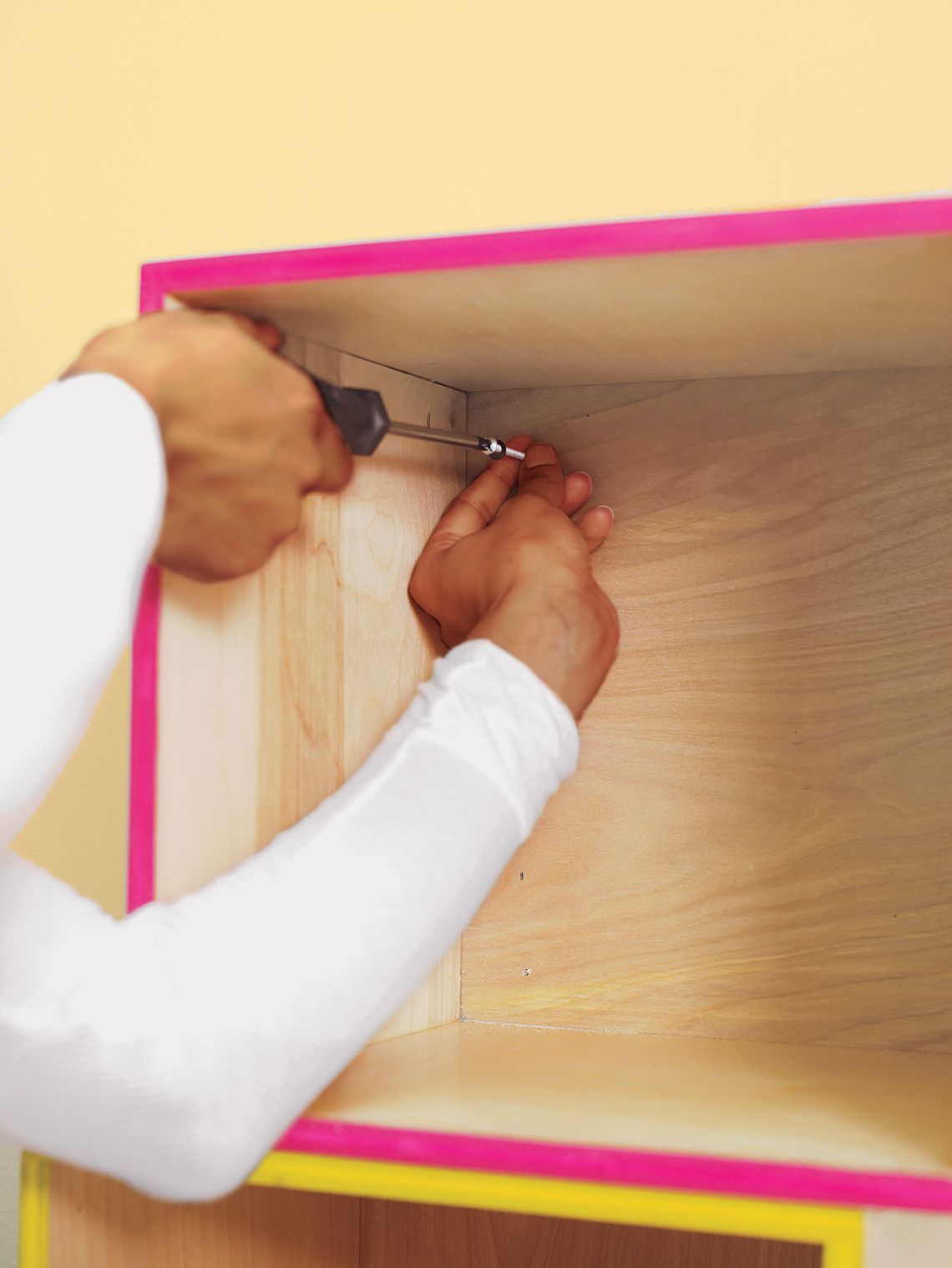
If you want to stack up more than one box, you’ll need to secure them to the wall so that they can’t topple over. Hold the box where you want it to sit, and using a drill or driver fitted with a 1/16-inch bit, make a small hole through each of the four corners of the back panel and into the wall. If you did not hit the wall framing, you will need to properly anchor the holes.
Reposition the box over the holes. Use a screwdriver to mount the box with 2-inch screws fitted with washers and driven through the lauan and into the wall framing or anchors.
Parents: Make sure you use the right kind of anchors for your wall: plastic ribbed anchors for plaster and screw-in anchors or toggle bolts for drywall. If you hit the wall framing, that’s even better—screw directly into that and skip the anchor altogether.
Step 9: Make the Panel Insert
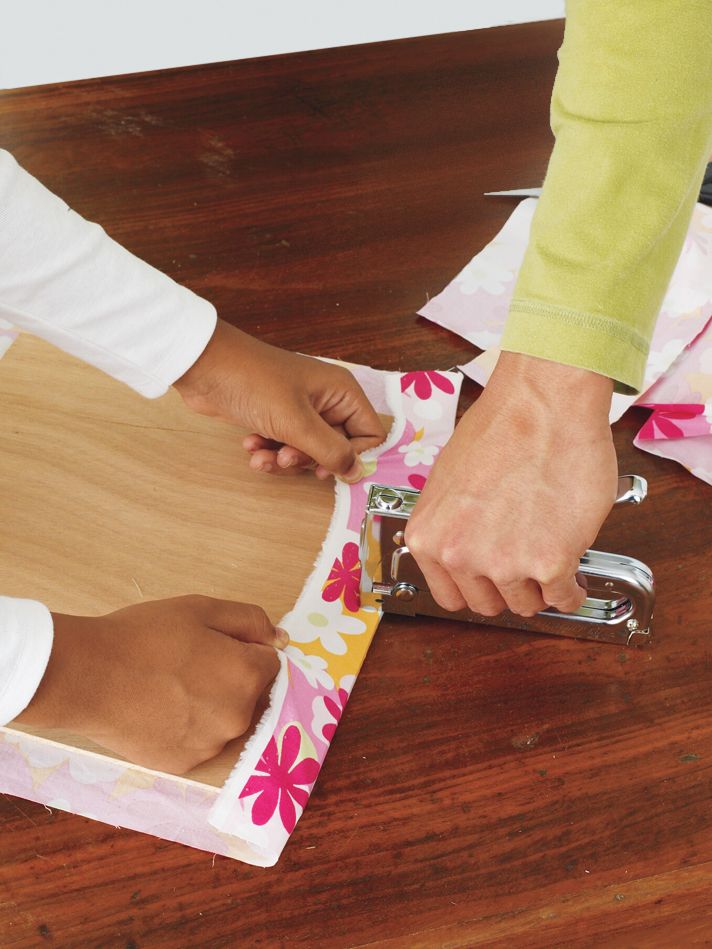
Cut a 13-by-13-inch square of the fabric. Lay it facedown, then put the 11-by-11-inch piece of lauan in the center. Fold one edge of fabric onto the lauan and, using a staple gun with 1/4-inch staples, tack it in the middle. Fold the opposite side over, and pull it tight before stapling it. Continue to staple on the fabric by working your way out from the middle and alternating sides. Do the same for the other two sides until the fabric is smooth and covers the lauan.
Kids: Staple guns are great for attaching fabric to wood, but before you squeeze the handle, make sure the head is flat on the workpiece and never pointed at anyone.
Step 10: Prepare the Cubby Back Panel
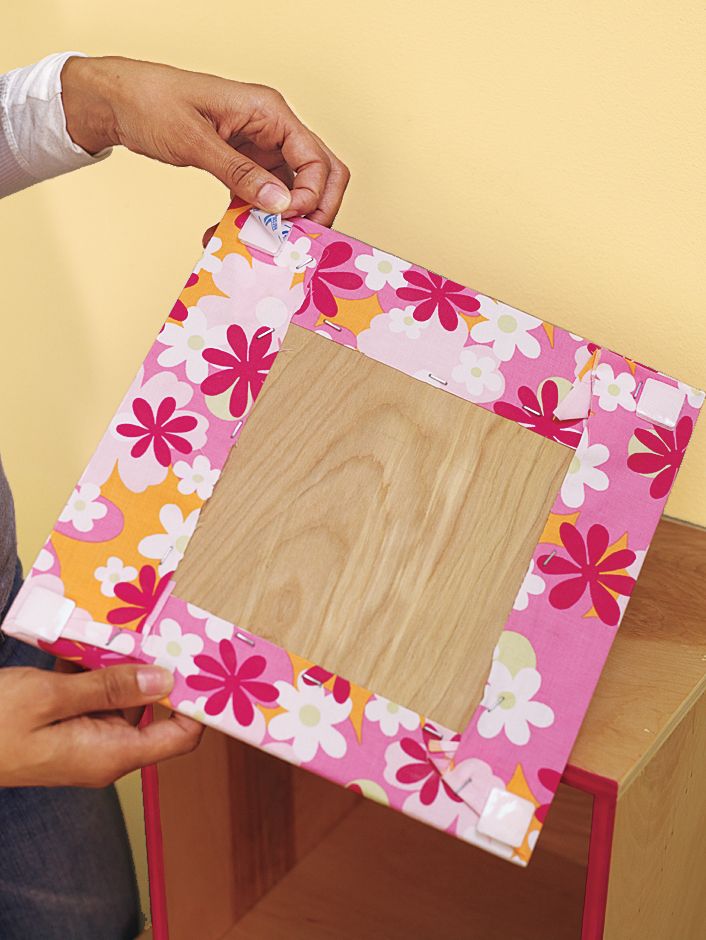
Cut four small tabs of stick-on Velcro tape. Keep both halves of the Velcro stuck together. Peel away one side of the paper backing, and stick a tab onto each of the four corners of the back of the decorative panel. Peel away the paper backing on the other half of the Velcro tape while it’s still on the decorative panel.
Step 11: Put the Back Panel in the Wall Cubby

Push the panel into the box and press hard. Wait a few minutes before pulling the panel back out; it should leave behind the other half of the tape, which will allow you to change the panel whenever you want to give your cubbies a different look.
How To Customize Your Wall Cubbies
Below are some ideas for ways you can further customize your cubbies:
- Additional shelving: Add smaller shelves inside larger cubbies for a layered storage effect.
- Labels and tags: Attach labels for easy item identification.
- Paint colors: Choose bold, coordinating, or neutral tones to match room decor.
- Removable inserts: Change fabric or paper inserts seasonally or based on personal preference.














